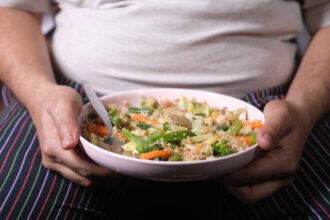According to a study scheduled for presentation at The Liver Meeting, hosted by the American Association for the Study of Liver Diseases, individuals who primarily drink beer have notably poorer diets, are less active, and are more inclined to smoke compared to those who consume wine, spirits, or a combination of alcoholic beverages.
Madeline Novack, the chief resident at Tulane School of Medicine’s internal medicine residency program and the lead author of the study highlighted the significant health risks associated with excessive alcohol consumption. She pointed out that alcohol overuse is a primary cause of cirrhosis in the U.S., and metabolic dysfunction-associated steatotic liver disease (MASLD) is on the rise. Novack emphasised that both types of liver disease often co-occur and that making lifestyle adjustments is crucial for both managing and preventing these conditions. This begins with understanding how alcohol consumption correlates with poor nutritional choices.
The research surveyed a nationally representative sample of over 1,900 U.S. adults who reported current alcohol use to analyse diet quality. The groups compared included individuals who consume exclusively beer (38.9%), exclusively wine (21.8%), exclusively liquor (18.2%), or a mixture of alcohol types (21%). Their self-reported eating habits were evaluated against the Healthy Eating Index, a validated, standardised tool reflecting dietary guidelines.
Novack reported that none of the alcohol-consuming groups achieved a score close to 80 points, which is considered adequate on the 100-point Healthy Eating Index. Beer drinkers scored the lowest at 49, while wine drinkers scored slightly higher at 55. Those consuming only liquor and those who drank a combination of alcohol scored around 53.
She noted that beer-only drinkers are typically younger, male, smokers, and from lower income brackets. They also reported the highest daily caloric intake when adjusted for body weight and exhibited the lowest physical activity levels. While previous studies have shown that dietary quality diminishes with an increase in alcohol consumption regardless of the type, specific influences of different kinds of alcoholic beverages have been less explored.
The study suggests that the variation in diet quality among different types of drinkers could be related to the contexts in which food and alcohol are consumed together. For instance, in the U.S., beer is frequently chosen when the available food options are often low in fibre and high in carbohydrates and processed meats. Conversely, wine, particularly red wine, is typically consumed with meals that include meat, vegetables, and dairy.
Novack also proposed that the relationship could be inverse, where dietary preferences might dictate alcohol choice. For example, consuming fried or salty foods, which induce thirst, might lead people to choose beer.
Novack emphasised the importance of healthcare providers discussing alcohol consumption types with their patients to promote healthier behaviours. For instance, the findings from this study could be leveraged to advise patients who primarily drink beer to increase their intake of fruits and vegetables and to enhance their physical activity levels as part of a broader strategy to prevent liver disease and other health complications.
More information: Madeline Novack et al, Convergence of Alcohol Consumption and Dietary Quality in US Adults Who Currently Drink Alcohol: An Analysis of Two Core Risk Factors of Liver Disease, Nutrients. DOI: 10.3390/nu16223866
Journal information: Nutrients Provided by American Association for the Study of Liver Diseases








